13 Awesome Things To Do In Athens, Greece For First-Timers
Athens, Greece’s most populous city, the birthplace of democracy, and home to some of the best well-preserved, and most beautiful ruins in the world have been getting quite a bad rap lately by some travelers who claimed the city is ugly and doesn’t have much to offer for travelers.
After I visited the city myself for about a week last summer, I have to disagree with that statement. Personally, I have no idea what they were talking about as I had a hell of a time in Athens.
The city is awesome! It is a well-lived-in city, which is as authentic as it comes. The city has charming neighborhoods, a ton of awesome viewpoints, and a slew of incredible things to do. I had a great time here and highly recommend you do not skip the city based on the negative reputation you have heard before and check out the city for yourself!
Within this guide, you will find all the information you need to plan a perfect trip to Athens.
1. Explore The Ruins Of The Parthenon
The Parthenon is probably one of the most recognizable landmarks in Greece, if not the world. People travel from all over the world to see this well-preserved Greek ruin that have stood the test of time for more than 2,000 years with their own eyes.
The temple was built in the 5th century BC as a dedication to the Greek goddess Athena Parthenos, who was regarded as the protector of Athens. It was designed by the renowned Greek architects Iktinos and Kallikrates, and its construction took almost 15 years to complete.
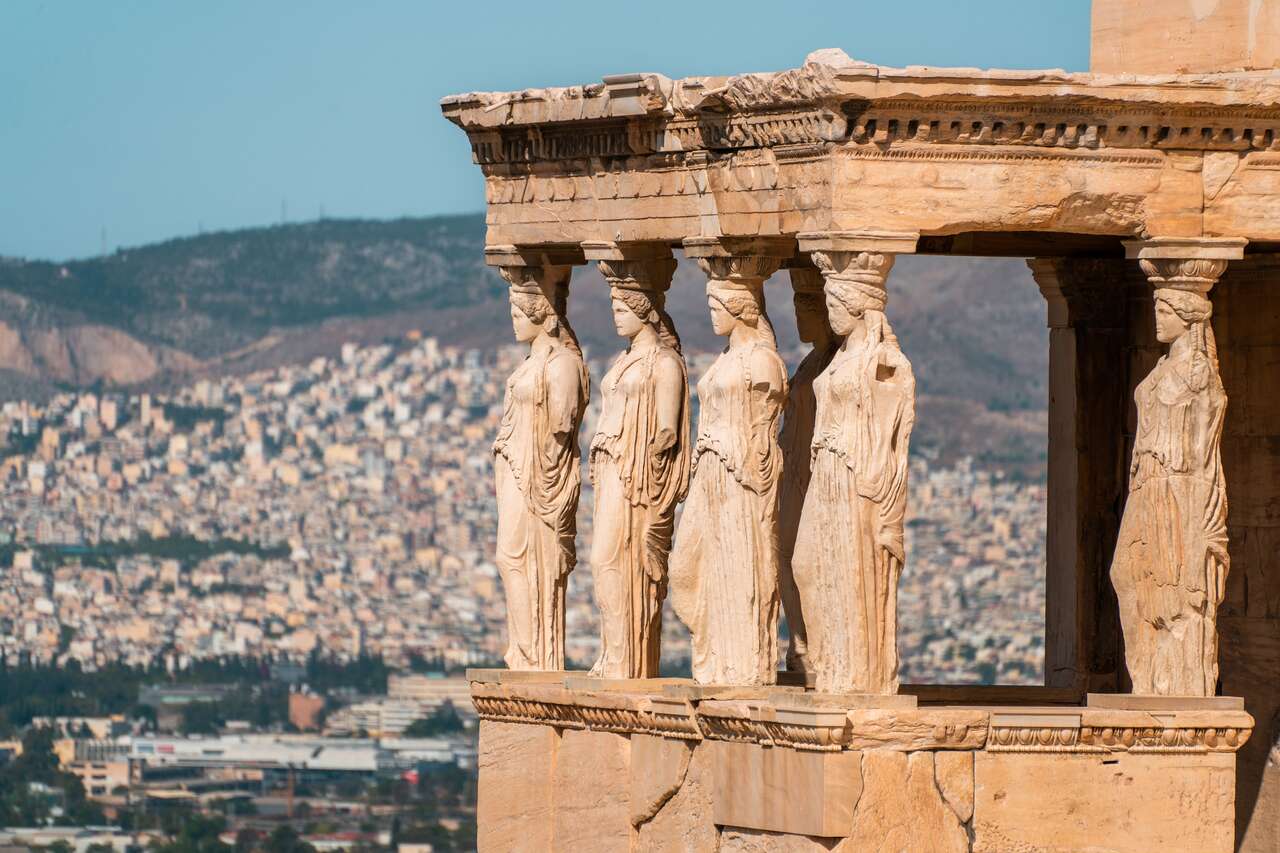
The Parthenon was not only a religious center but also a symbol of Athenian power and democracy. It housed a 40-foot-tall statue of Athena made of ivory and gold, which was one of the most impressive works of art in the ancient world. It really goes to show just how incredible the Greek craftsmanship was. They were truly ahead of their times.
Unfortunately, many of the temple’s stunning sculptures were removed and taken to Britain in the 19th Century, many of which still remain inside the British Museum, although some of them have been returned and kept in the Acropolis Museum which we will be visiting later.
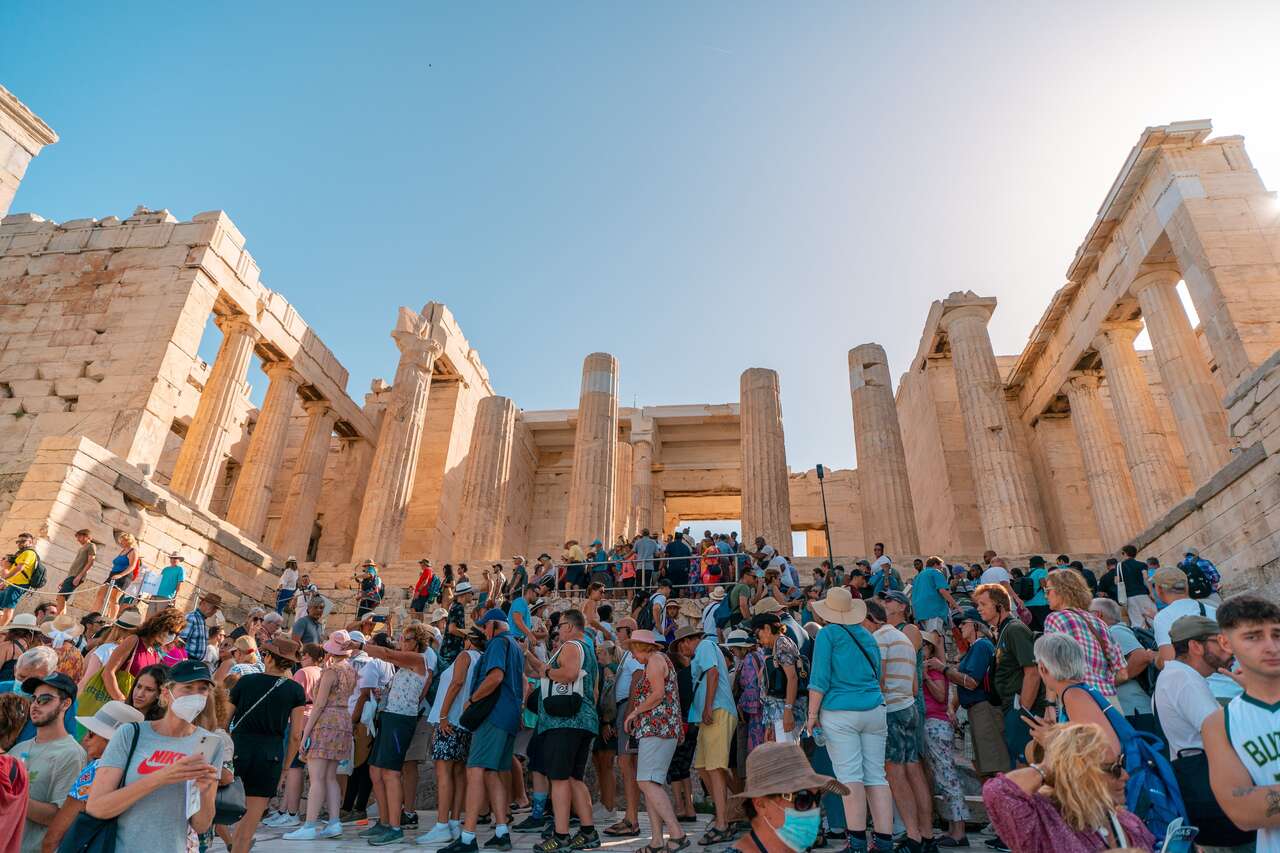
Due to the popularity of the acropolis, expect the place to be overrun by tourists at all times. I went there in the morning and it was incredibly crowded right from the get-go, especially at the staircase leading up to the acropolis.
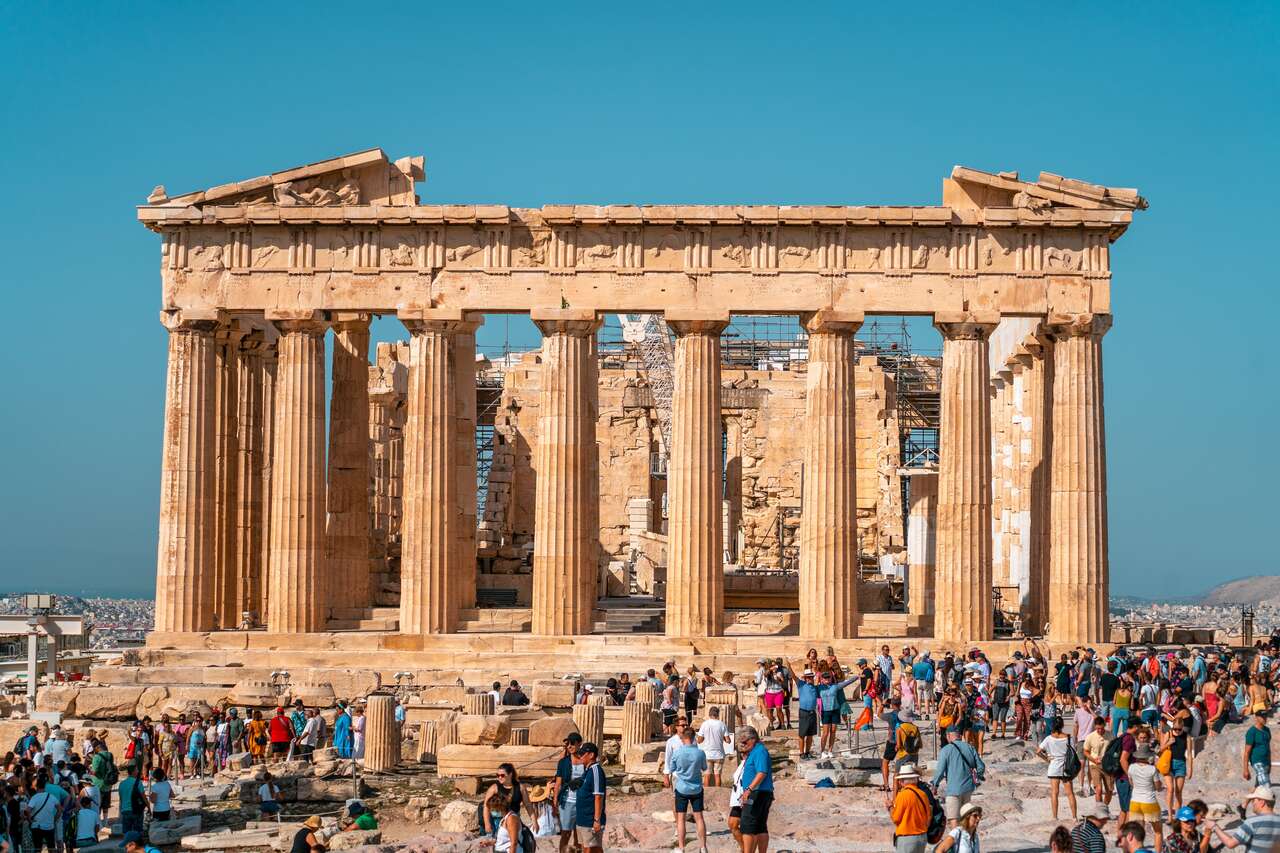
Although, the crowd dissipated after passing through the entrance as people fan out around the temple ground so it isn’t as bad as it seems. Also, the crowd control is done quite well here with people continuously flowing through the temple from one entrance which was then funneled through another exit.
You can buy the ticket online from here which will also include tickets to the Acropolis Museum and the Archeological Museum or you can buy it at the entrance of the park right at the entrance on the south slope of the acropolis for around 20 EUR. The Acropolis Hill is open from 8 AM to 8 PM every day. Definitely one of the best things to do in Athens so be sure to check it out.
2. Check Out The Theatre Of Dionysus
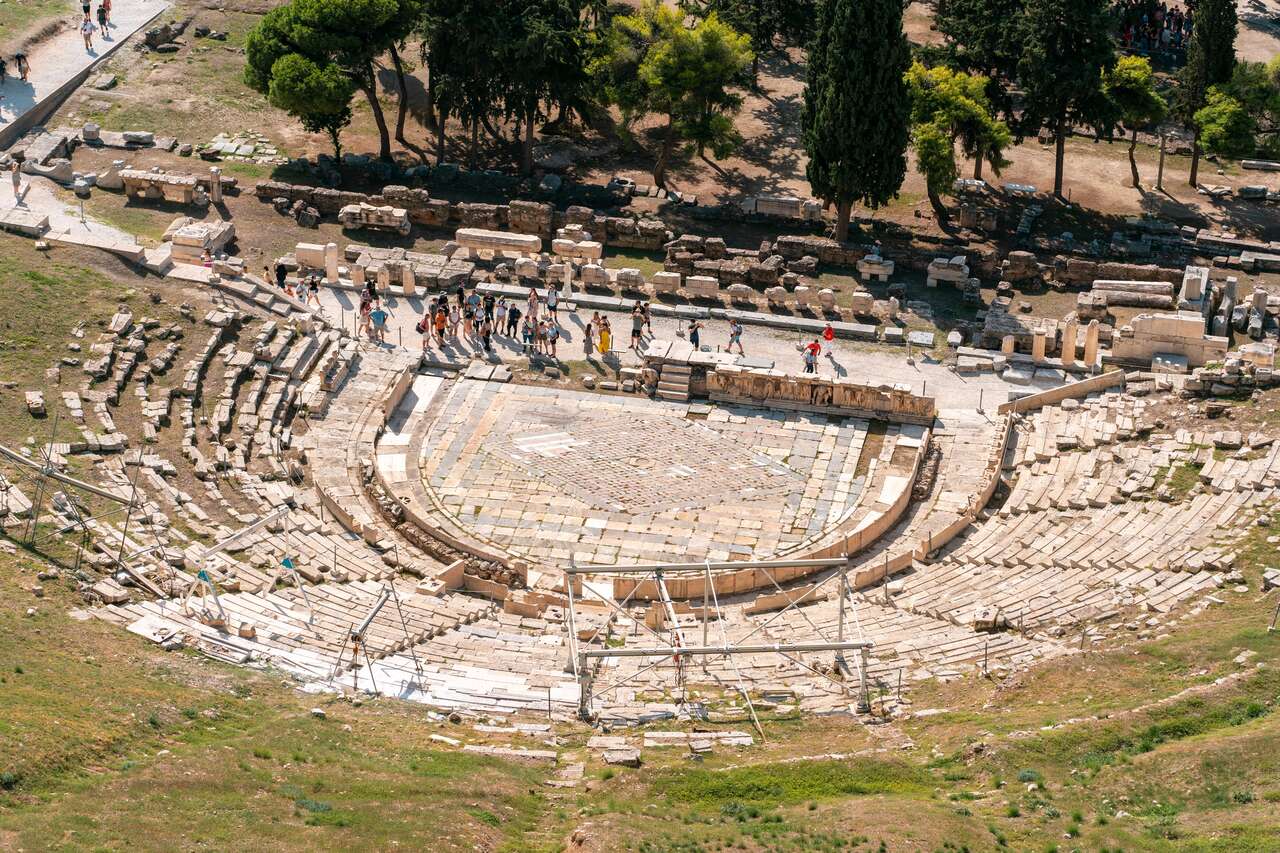
As you enter the Acropolis hill from the south slope, you will also encounter another awesome structure from the Ancient world, the Theatre of Dionysus, an ancient Greek theatre built in the 5th Century BC, named after the Greek god of wine, Dionysus, who was also the patron of the theatre.
This theatre was the birthplace of Greek drama, where famous playwrights such as Aeschylus, Sophocles, and Euripides staged their plays during the classical period of Athens. The theatre could seat up to 17,000 spectators and was considered the largest theatre in Greece at the time.
After Greece was under Roman control, the theatre was reconstructed and transformed into an arena for gladiatorial games before it fell into disuse and was abandoned in Middle Ages. Later on, the ruins were used as a quarry for building materials before it was converted into the archeological site we see today.
Since it is on the way to the Parthenon, be sure not to miss it as you ascend the stairs up to the top of the Acropolis Hill and admire the beauty of the birthplace of Greek drama in person.
3. Admire The Beauty Of Odeon Of Herodes Atticus
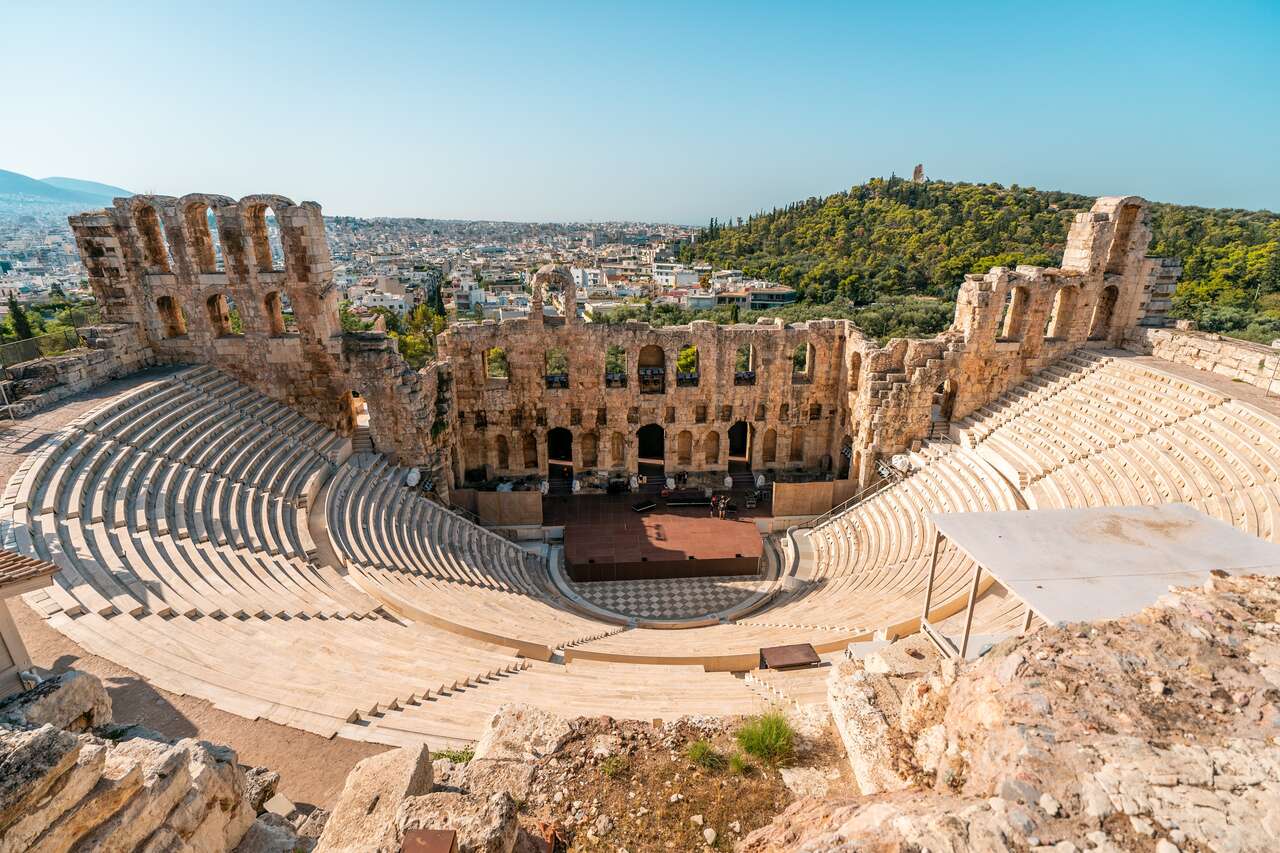
Another impressive structure you should check out while you make your way up to the Parthenon from the southern slope is the Odeon of Herodes Atticus, a historic amphitheater built in the 2nd century AD by the wealthy Roman politician Herodes Atticus.
The Odeon of Herodes Atticus was designed to host musical and theatrical performances and could seat up to 5,000 spectators. It was renowned for its exceptional acoustics, which allowed performers to be heard throughout the entire theatre without the use of microphones or amplifiers.
The place is so extremely well-designed that it remains a prominent cultural landmark and is still in use to this day by the Athenians to host numerous concerts, operas, and other performances. The place is even larger than the Theatre of Dionysus and in a way better well-preserved condition than I expected.
When I was there, they were equipping the theatre and gearing up for another concert so I was unable to get in and see the place up close. At least I was able to see it from above as ascended the Acropolis Hill. When you visit the Parthenon, be sure to check out Odeon of Herodes Atticus before heading up to the top of the Acropolis Hill.
4. See The Parthenon From Areopagus Hill
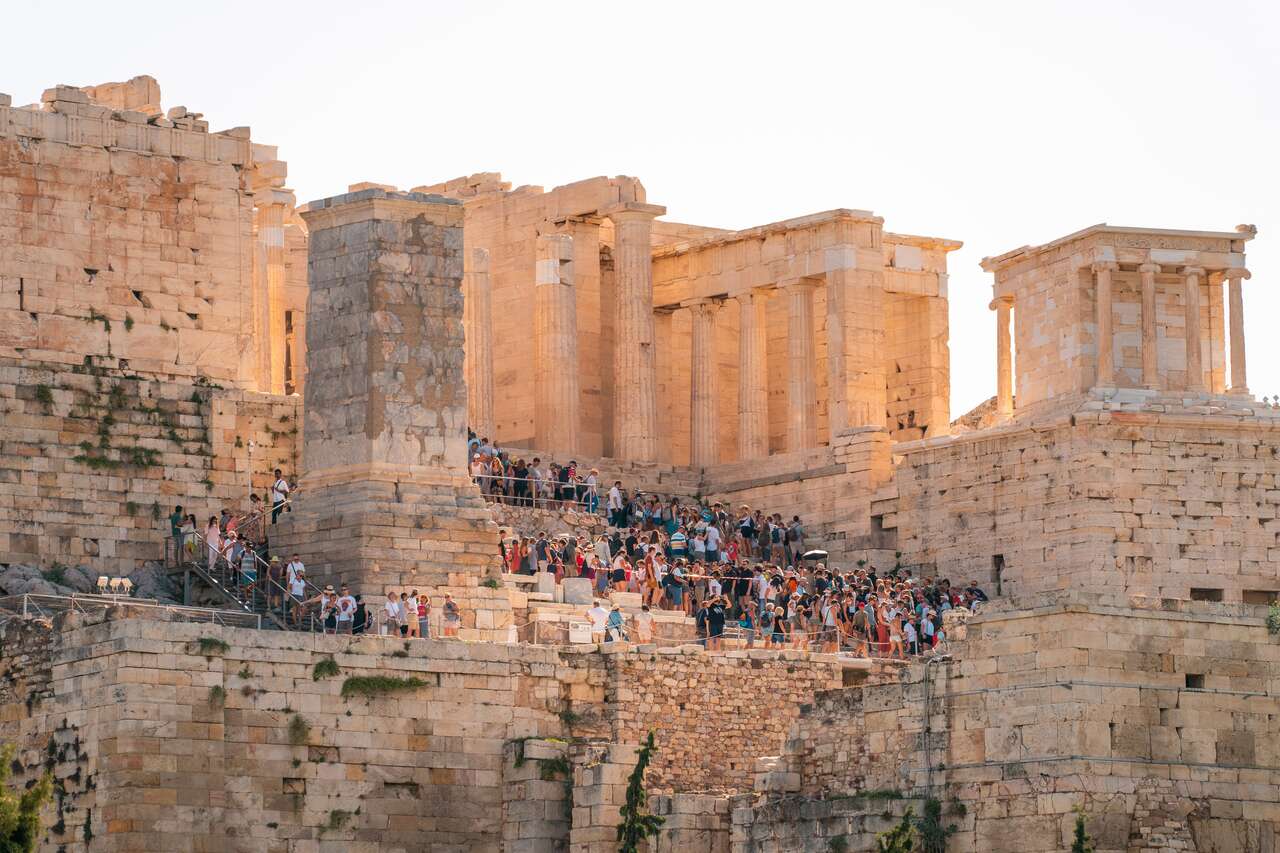
After you are done with the Parthenon, you will be ushered down the northern slope as you exit the park. Right after the exit, be sure to check out the Areopagus Hill, a prominent rock outcropping named after the Greek god of war, Ares, which offers a nice viewpoint of the Parthenon and the Acropolis Hill from below.
In ancient Greece, the Areopagus Hill was the site of the city’s highest court of law, where cases involving murder and other serious crimes were heard. It was also the site of many significant historical events, including the trial of the philosopher Socrates in 399 BC.
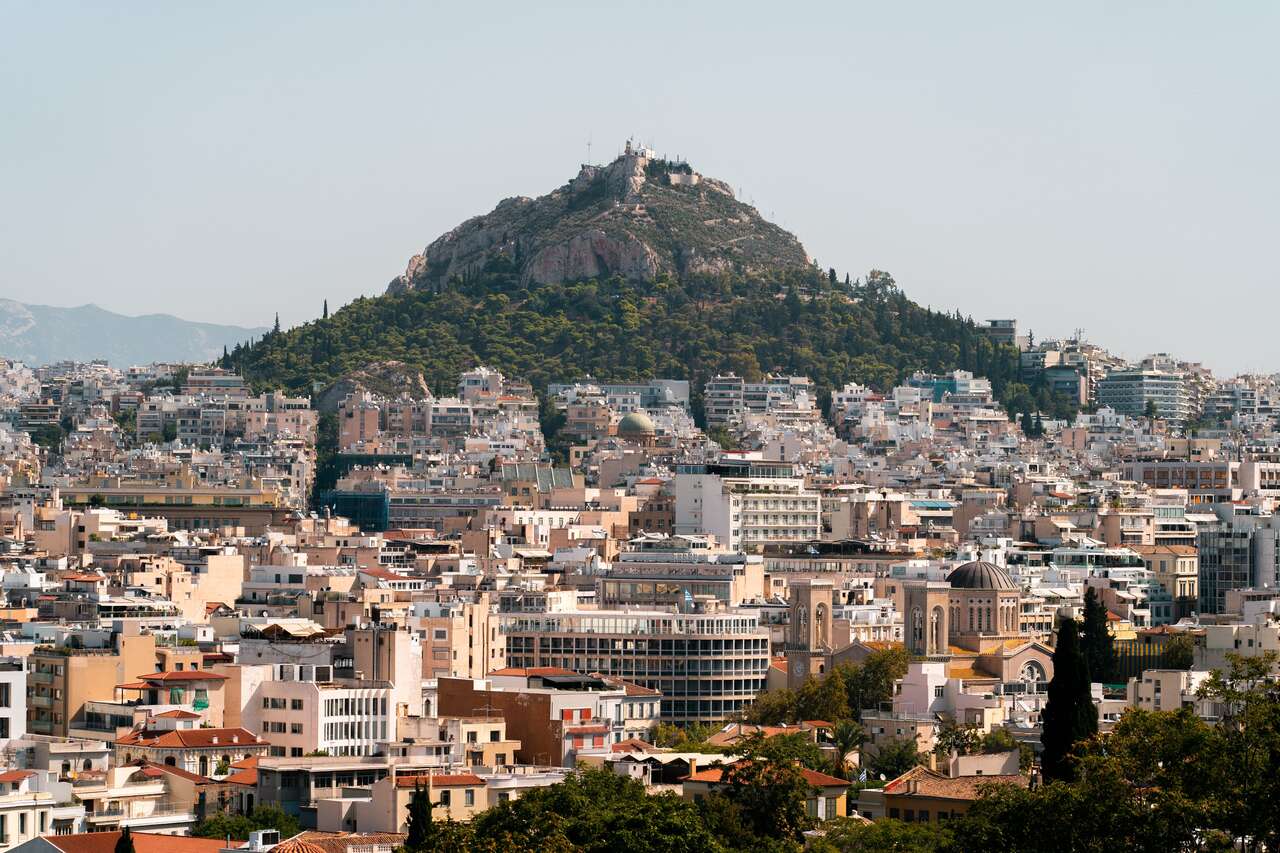
Nowadays, it is a popular viewpoint for tourists to look back at the Parthenon and admire its incredible beauty from below without obstruction so be sure to check out the viewpoint before we move on to explore other parts of Athens.
5. Stroll Around The Roman Forum Of Athens (Roman Agora)
From Areopagus Hill, you should be able to see another set of old ruins down below. These are the ruins of the Roman Forum of Athens (Roman Agora), an ancient public square that can often be found in most cities the Romans have ever ruled.
The Roman Forum was built by the Roman Emperor Julius Caesar and his successor, Augustus, during the 1st century AD, and it was built on top of the site of an earlier Greek agora.
Like most Roman Forums, it was designed as a grand public space for political, commercial, and social activities, and it served as the administrative center of the city during the Roman period. It was surrounded by a series of grand buildings, including a basilica, a temple dedicated to the goddess Roma and Emperor Augustus, and a public latrine.
While here, be sure to check out grand structures like Horologion of Andronikos Cyrrhestes, an ancient octagonal weather station, Hadrian’s Library, an ancient Roman library, and the archeological museum of Stoa of Attalos which holds all the excavated artifacts found at the Roman Forum.
6. Get Lost In Anafiotika
As you make your way down from Acropolis Hill, be sure to spend some time and stroll around the narrow streets of the charming and colorful neighborhood of Anafiotika.
The picturesque neighborhood was built in the mid-19th century by craftsmen and workers from the Cycladic island of Anafi who came to Athens to work on the construction of King Otto’s palace for a Bavarian prince who ruled as King of Greece in the same period.
Anafiotika is known for its small, whitewashed houses with brightly colored shutters and doors, narrow streets, and steep staircases that create a maze-like network throughout the neighborhood. The houses are built in the traditional Cycladic style, with flat roofs and blue-domed churches dotting the landscape.

If you have not been the Greek Islands yet, you can get a glimpse of what it is like over there by strolling around Anafiotika and exploring its beautiful narrow crisscrossing streets. Just be sure to respect the locals living there and keep your voice down.
7. Witness Sunset Over The Acropolis From Philopappos Hill
Now, if you are looking for the ultimate viewpoint of Athens to experience sunset over the city from above, there is no better place to be than Philopappos Hill.

Philopappos Hill is a hill located southwest of the Acropolis hill and it is named after the Roman prince and benefactor Gaius Julius Antiochus Epiphanes Philopappos, who was a citizen of Athens and a lover of Greek culture.
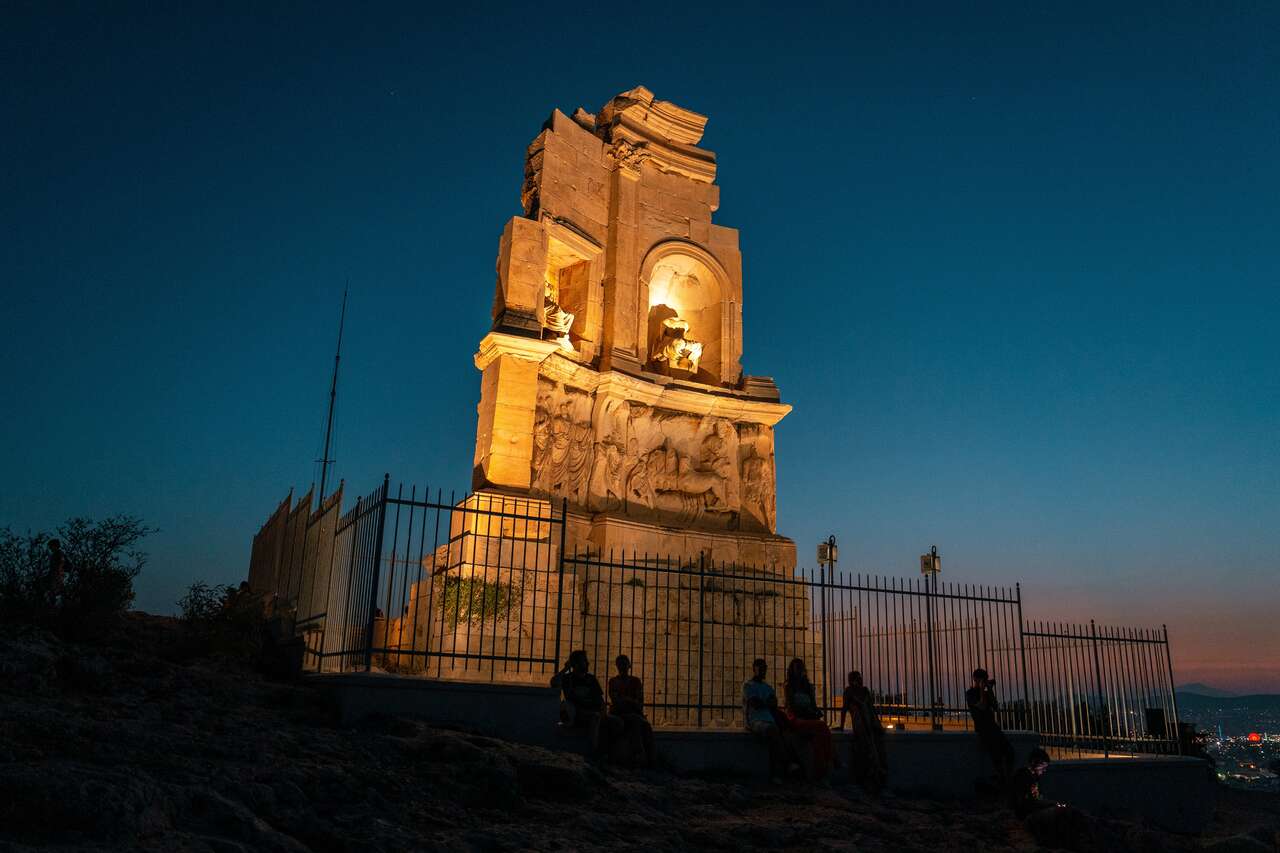
The hill is around 147 meters (482 feet) high which offers an incredible vantage point over the city as well as the Acropolis Hill without obstruction making it the best viewpoint to witness the incredible sunset over Athens. The hill is also home to several important archaeological sites, including the Philopappos Monument, a 2nd-century AD marble tomb built in honor of Philopappos that you can check out.
From up here, you can see Athens in its entirety from both sides of the hill but for the best view over the Acropolis Hill, I highly recommend you find a nice spot around this area and wait it out until the golden and blue hours which is when the light is best for photography.
Out of all the viewpoints in Athens, this is hands down, my favorite viewpoint of all. The incredible view the place offers and the camaraderie you share with people who came here with the same purpose of witnessing the sunset, you just can’t find anywhere else in Athens quite like it.

To get to the top of Philopappos Hill, you are going to have to hike up from one of the many entrances around the hill and you should be able to follow the unpaved track all the way to the top, taking about 15 – 20 minutes.

The trail gradually climbs until you are almost at the top before it becomes a little steep but not too much. Any able body should be able to reach the top without problems. Just make sure you align your visit in time for the sunset. Be there a little earlier to secure a spot as the place does attract quite a bit of people. Definitely one of the best things to do in Athens so be sure not to miss it.
8. Learn The History Of Athens At The Acropolis Museum
Now, if you want to learn more about the rich heritage of Athens and see all the excavated artifacts found at the Acropolis Hill over the centuries, I highly recommend you check out the Acropolis Museum while you are in Athens.
The Acropolis Museum is a world-class museum dedicated to the archaeological finds of the Acropolis hill. The museum opened in 2009 and houses a collection of artifacts and sculptures that date all the way back to the 5th century BC.
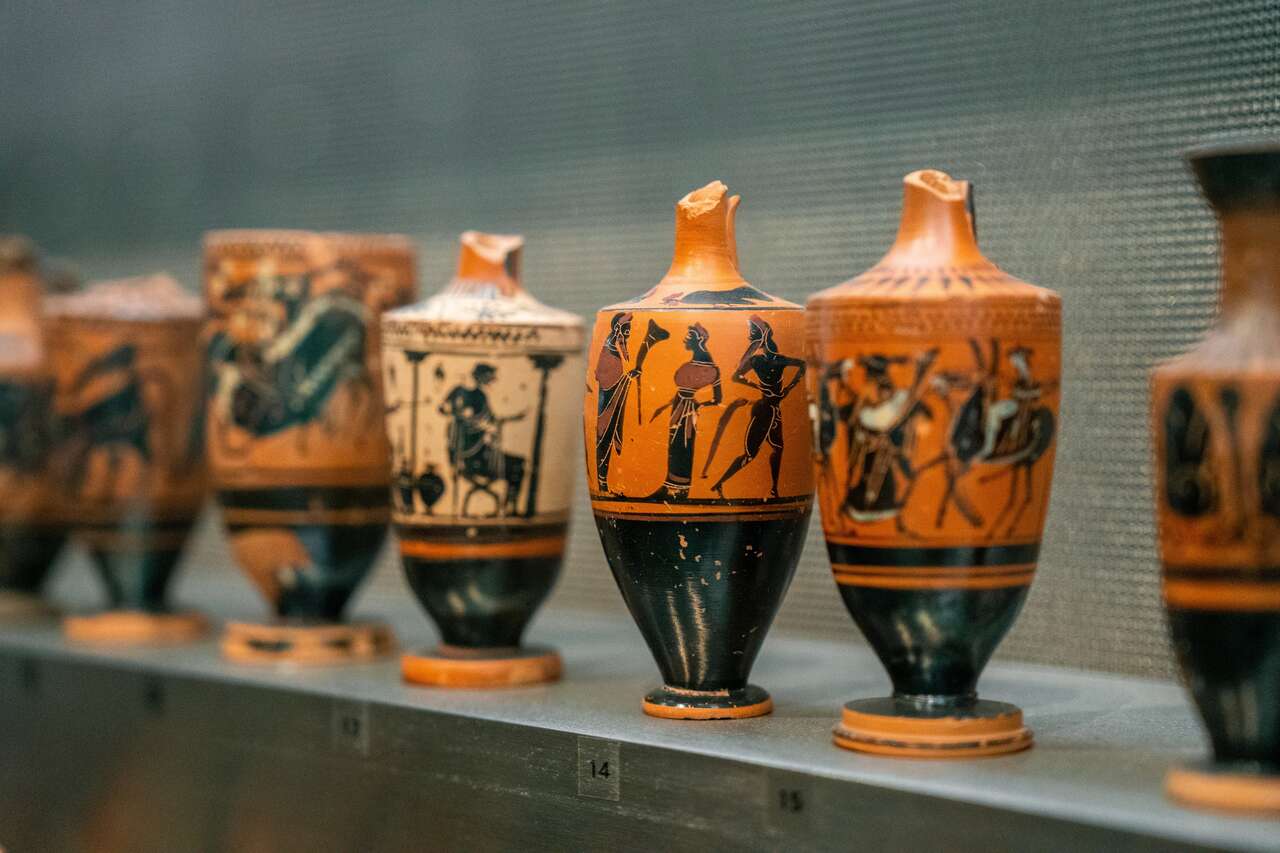
Inside the museum, you will find impressive displays of ancient Greek art and architecture, including the famous Parthenon sculptures, which were originally part of the temple’s frieze. The museum’s galleries showcase a variety of ancient objects, such as pottery, jewelry, and weapons, providing us with a glimpse of what daily life was like in ancient Greece.
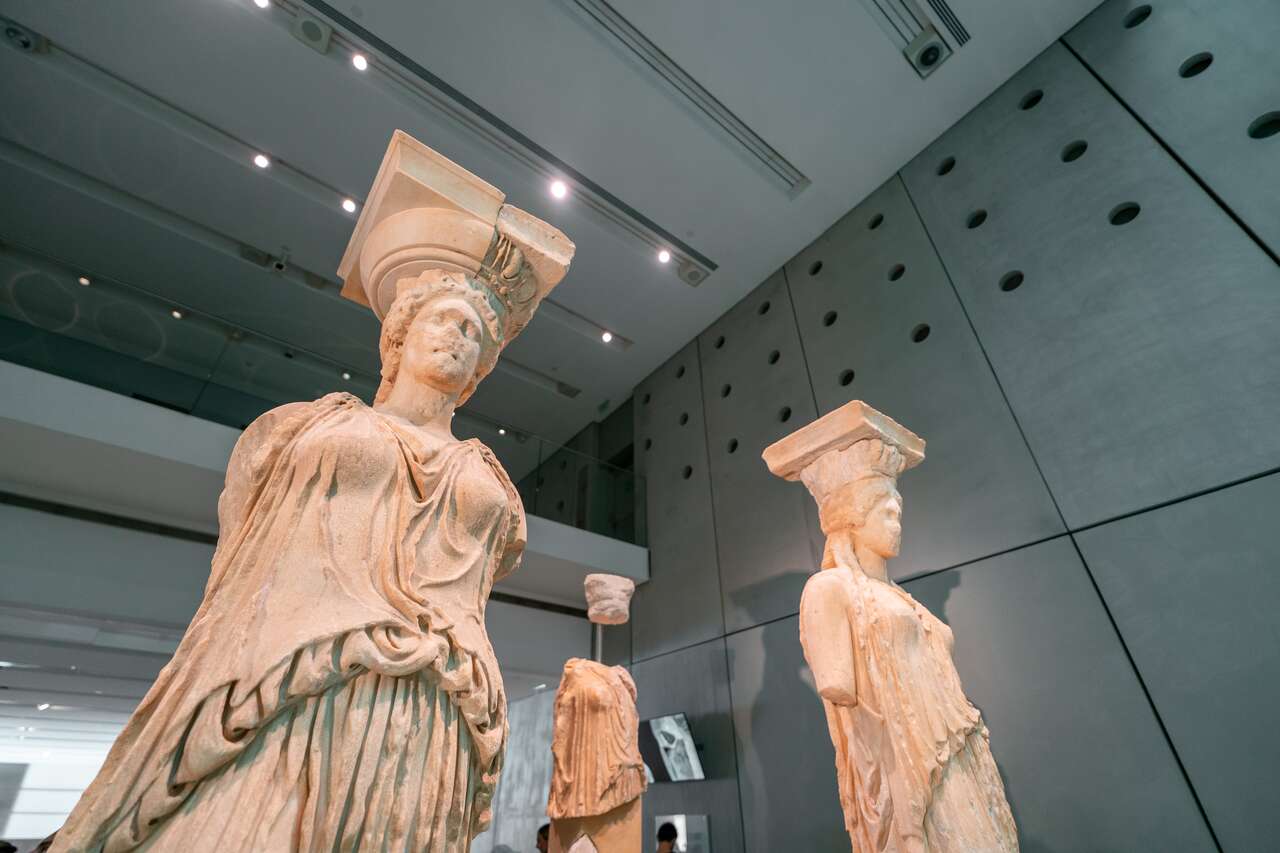
The museum is divided into 3 floors with the first floor having all the small excavated artifacts being displayed along both sides of the ascending walkway whereas, on the second floor, you will find a large hallway filled with intricate sculptures to the brim, while the third floor is reserved for smaller exhibitions.
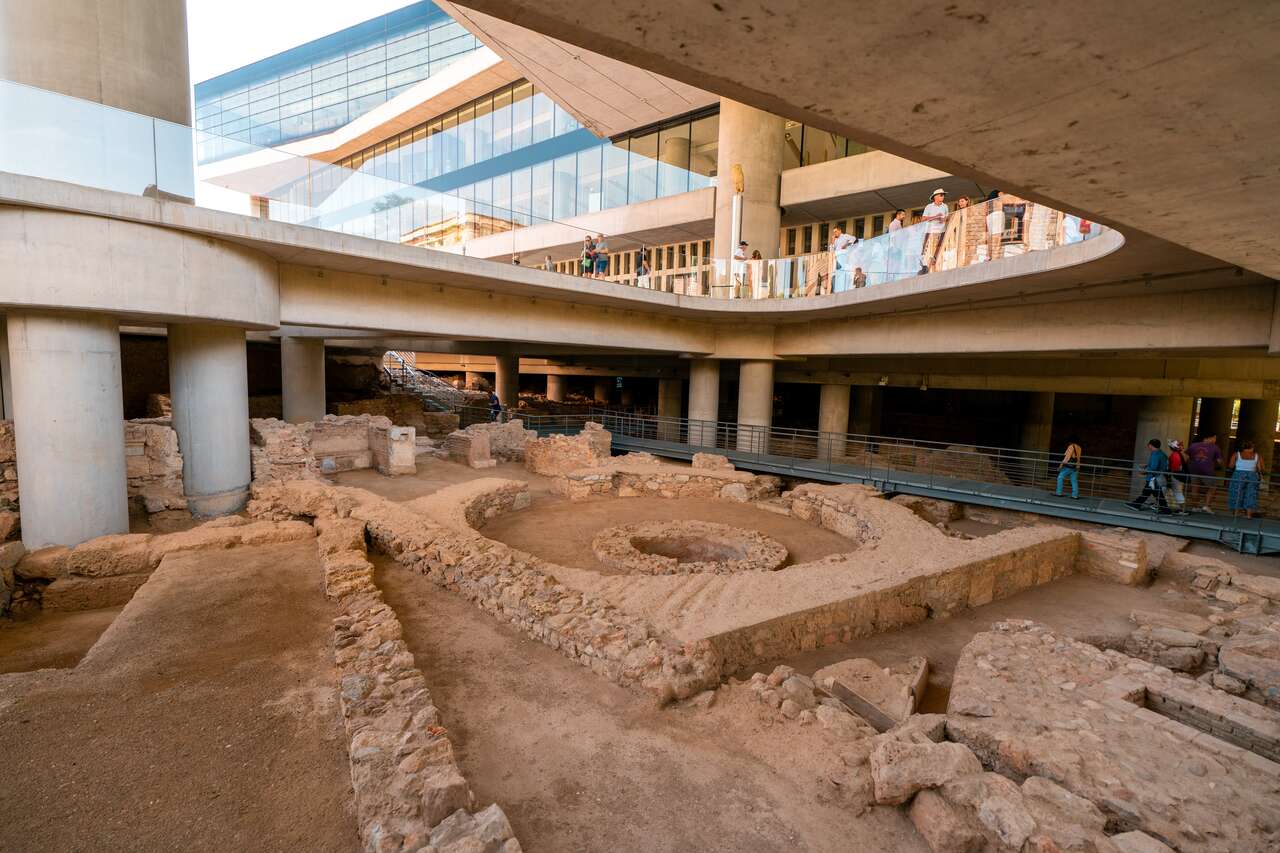
One of the highlights of the museum is the underground area where you will be able to explore the excavations of an ancient Athenian neighborhood beneath the museum via the glass floors. The museum’s rooftop restaurant also offers stunning views of the Acropolis and the surrounding area making it more reason to visit the Acropolis Museum after you are done with the Parthenon.
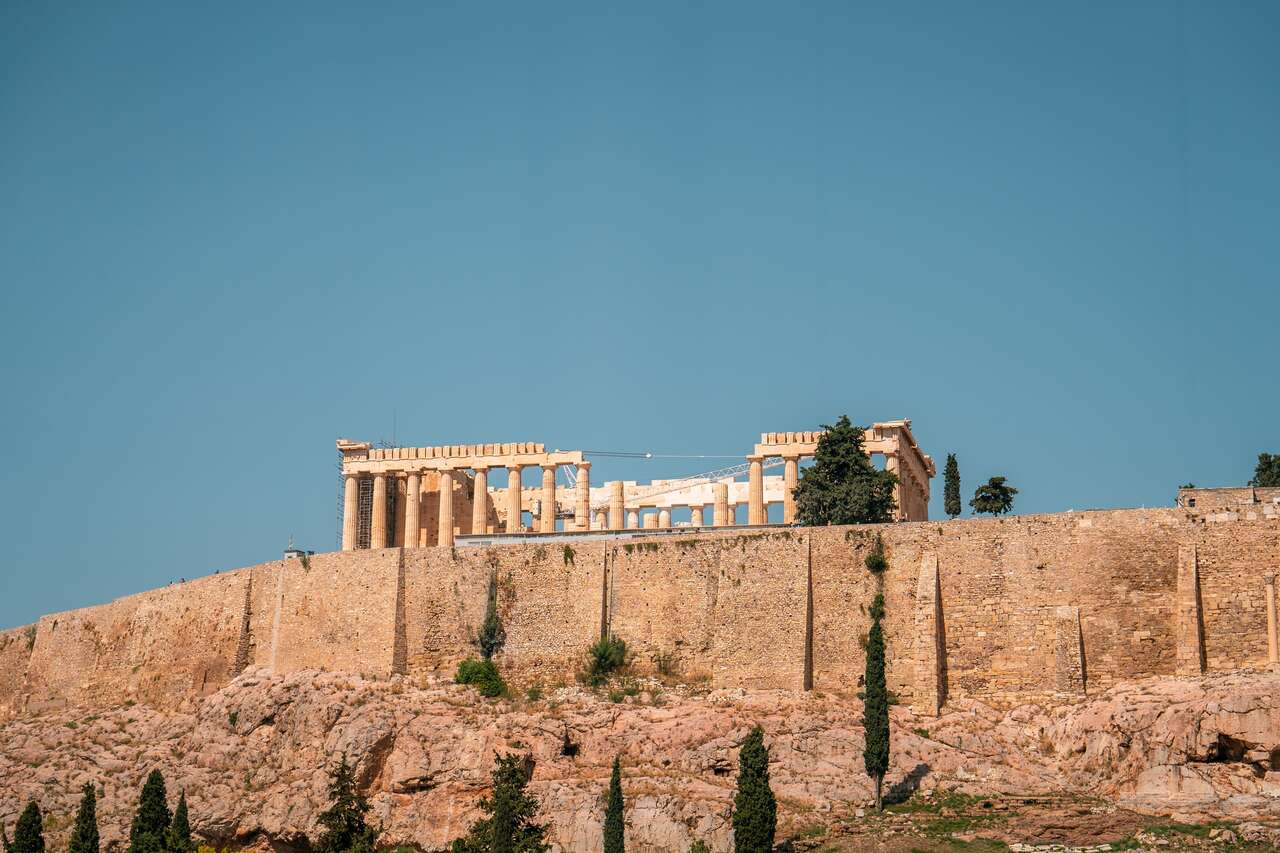
The entrance to the museum is around 15 EUR per person. You can buy the ticket from the entrance but the queue can be quite long at times. To skip the queue, I highly recommend you get the ticket online prior to your visit. If you plan to visit the Acropolis Museum as well as the Parthenon and the archeological museum, you can also go with a combination ticket to save even more. The museum is open from 9 AM to 6 PM every day except on Mondays when it is open from 9 AM to 3 PM only.
9. Take Photos Of Hadrian’s Arch
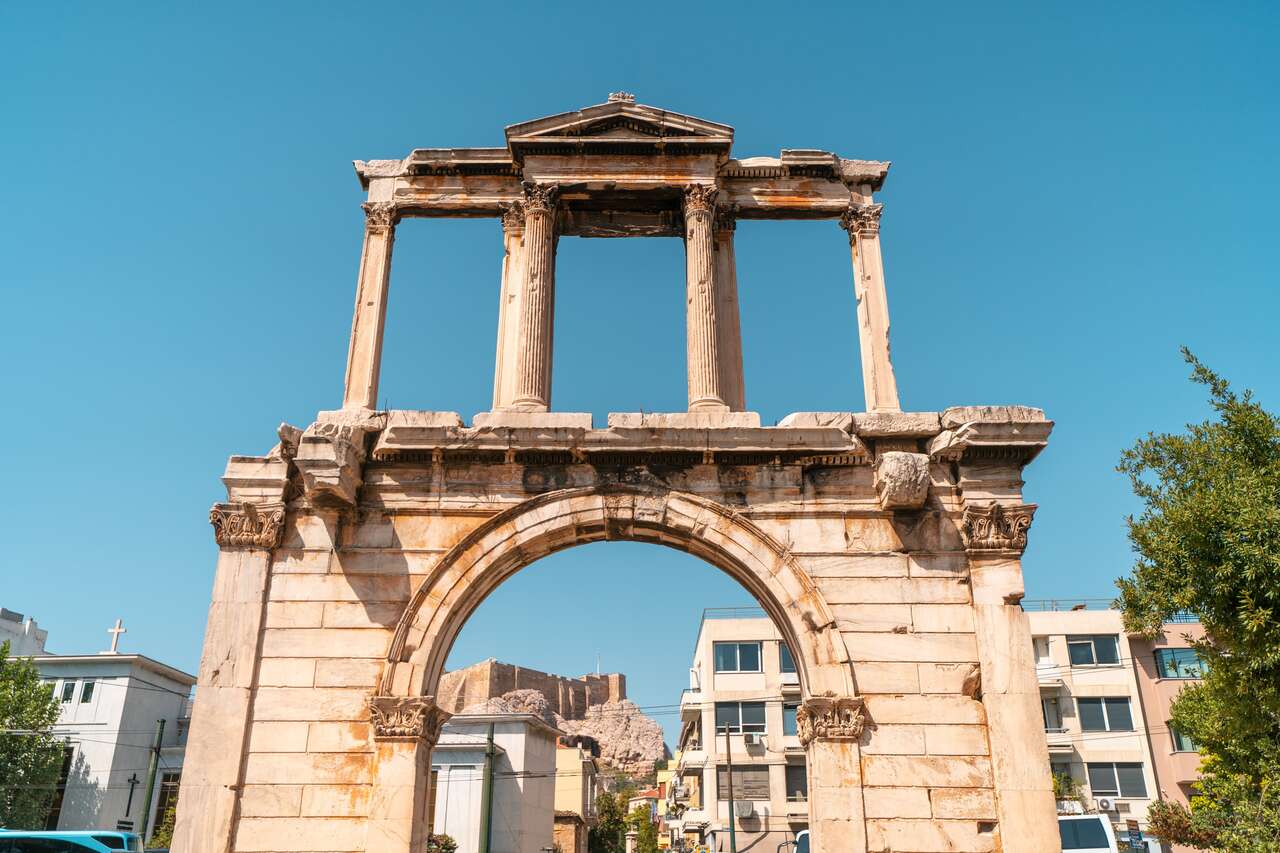
Now that we have completely explored the Acropolis Hill and its surrounding, it is time to move on to other tourist attractions outside the area. One of the iconic landmarks in Athens you should drop by and take photos of is Hadrian’s Arch.
Hadrian’s Arch is a monumental structure made of marble and stands 18 meters tall and 13 meters wide. The arch features two Corinthian columns on either side and an inscription on the side facing the Acropolis that reads: “This is Athens, the ancient city of Theseus.”
The arch was built by the Roman Emperor Hadrian in the 2nd century AD to mark the boundary between the ancient Greek city of Athens and the new Roman city that Hadrian established nearby. From here, you will be able to take a nice photo of the Parthenon atop the Acropolis Hill from afar while it is perfectly framed by the Hadrian’s Arch so be sure to drop by here and take some photos of this monument.
10. Stroll Around The Temple Of Olympian Zeus
Not too far from Hadrian’s Arch, you will find the Temple of Olympian Zeus, an ancient Greek temple built in the 6th century BC and dedicated to Zeus, the king of the gods in Greek mythology.
The Temple of Olympian Zeus took almost 700 years to complete, as it was started in the 6th century BC and was not finished until the Roman period, in the 2nd century AD. The temple was built using the finest materials, including Pentelic marble, and was adorned with numerous ornate decorations, including elaborate pediments and sculptures.
The temple is considered to be one of the largest ever built in ancient Greece and was intended to rival the nearby Parthenon in grandeur. You can easily grasp its true scale by looking at its massive columns that are still standing to this day, although, only 15 of the original 104 columns remain.
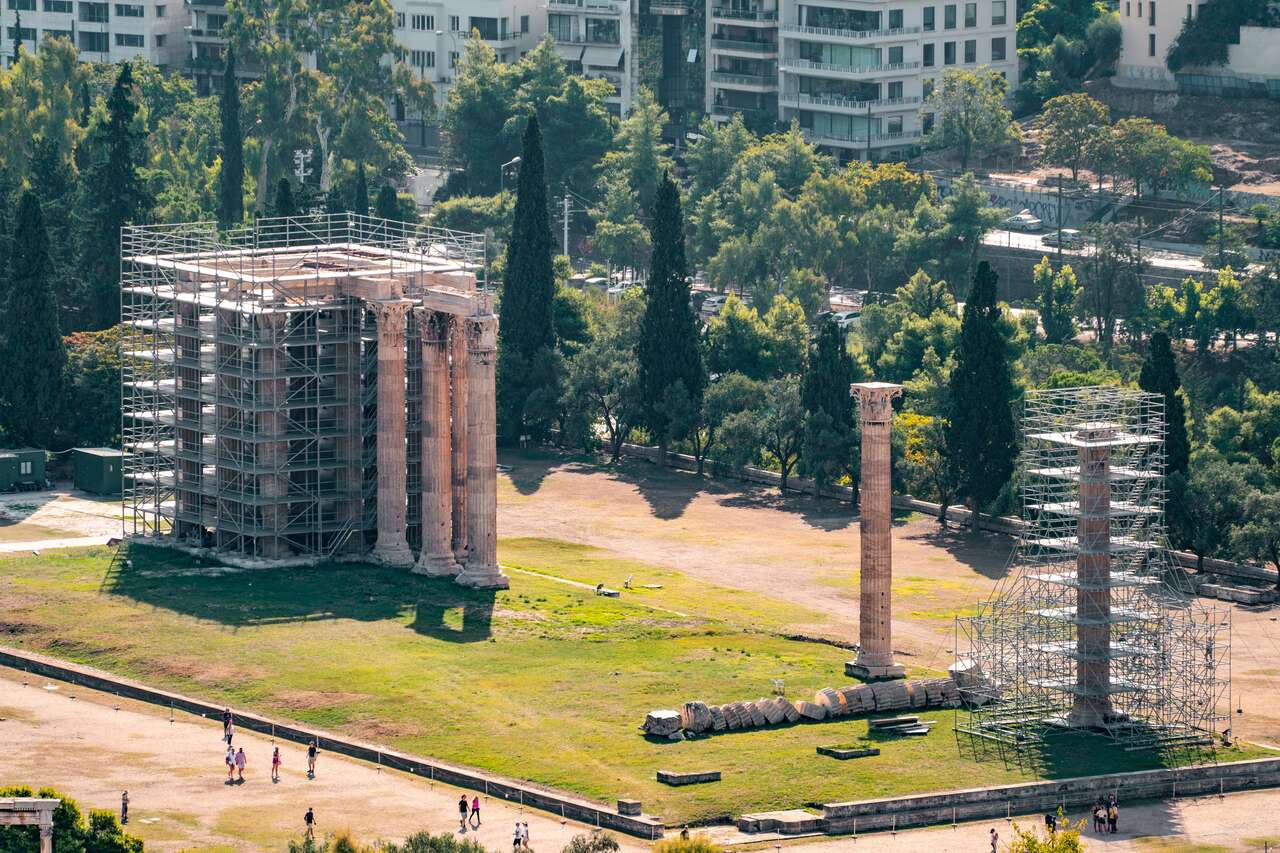
To get inside, you are going to have to pay the entrance fee of 6 EUR which can be bought online without having to queue. The temple is open from 8 AM to 3 PM every day.
11. Escape The Heat At Athens National Garden
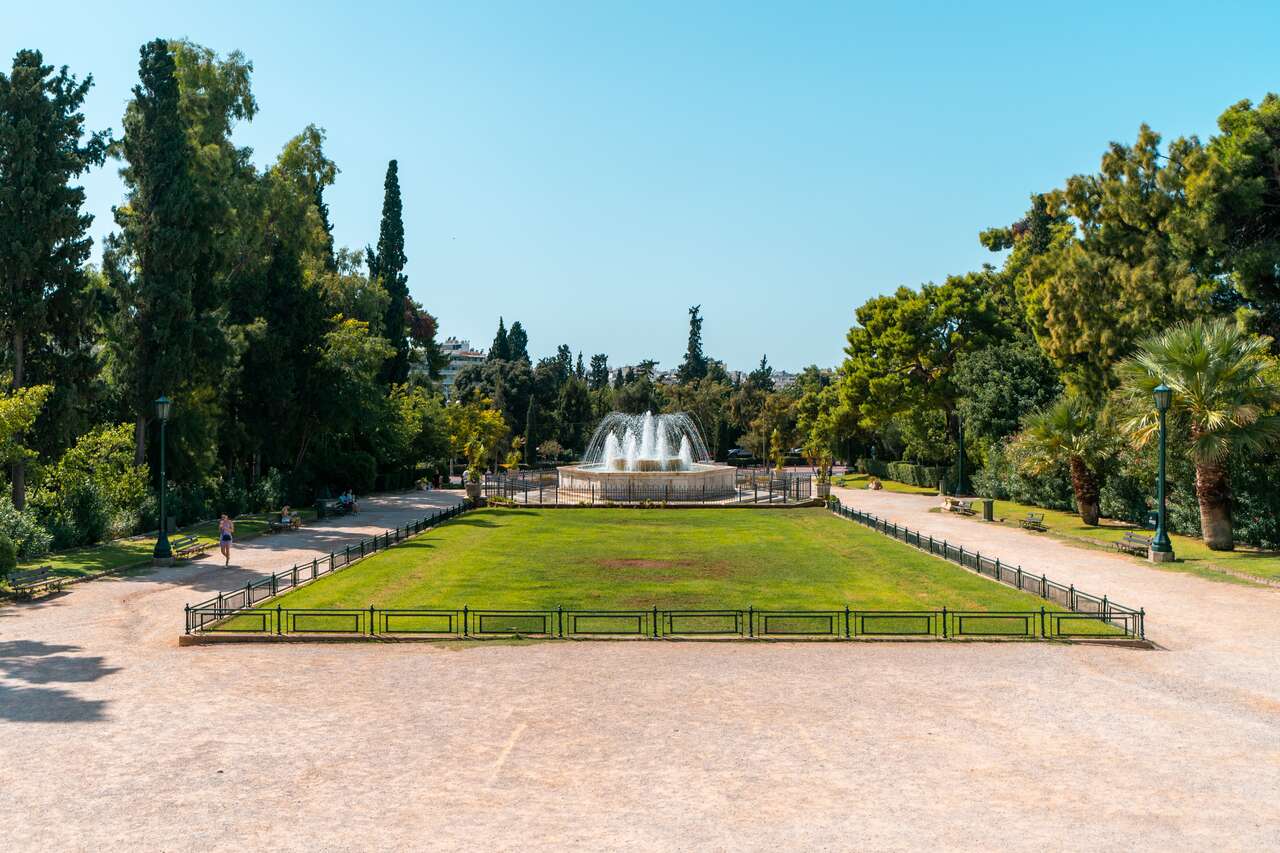
If you are looking for a nice quiet green space to escape the bustling city and the heat of Athens, located just north of the Temple of Olympian Zeus, you will find Athens National Garden, a royal garden that covers an area of 38 acres right in the heart of the city center.
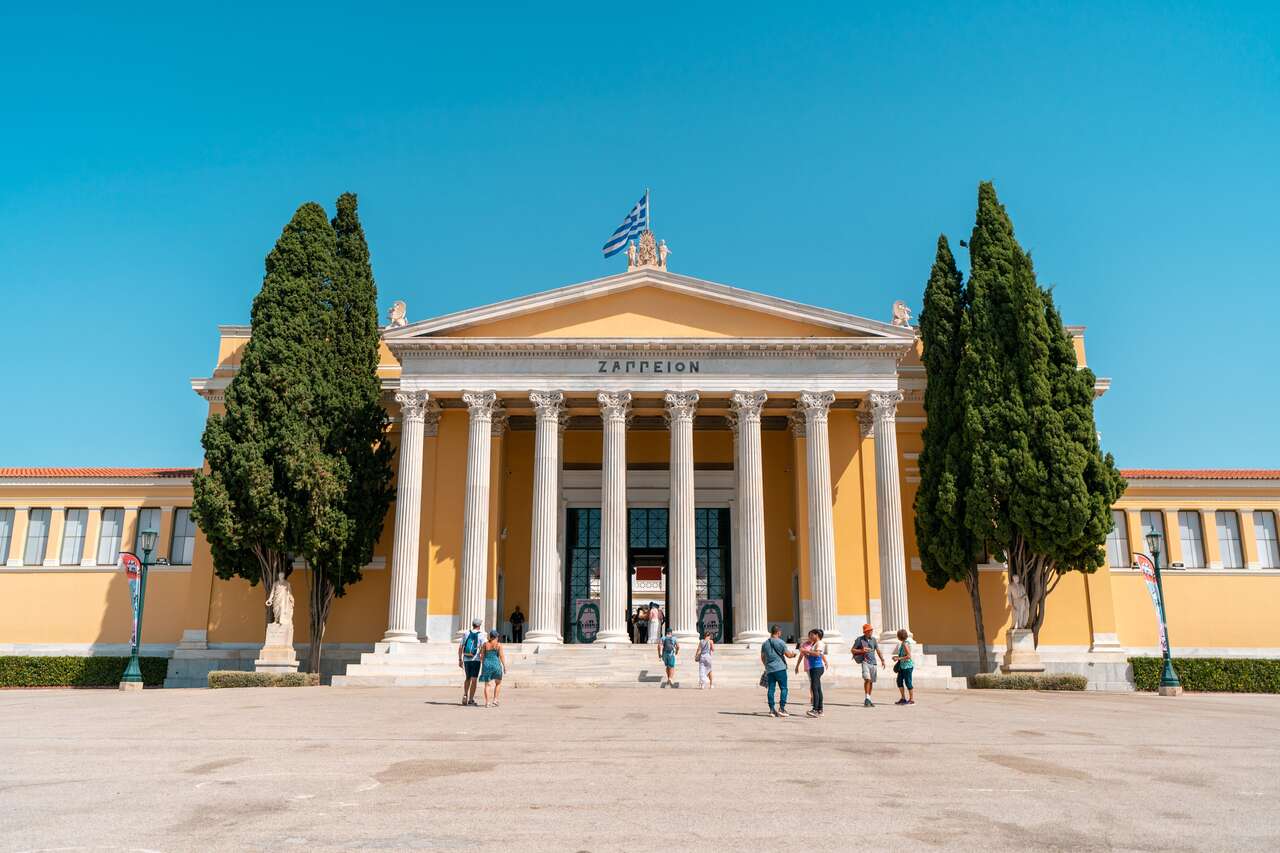
The Athens National Garden was originally created in the 19th century as the private garden of Queen Amalia, the wife of King Otto of Greece. It is home to a variety of plants and trees, as well as several important historical sites like the 19th Century Zappeion Hall, Zappeio Roman Baths, and many more.
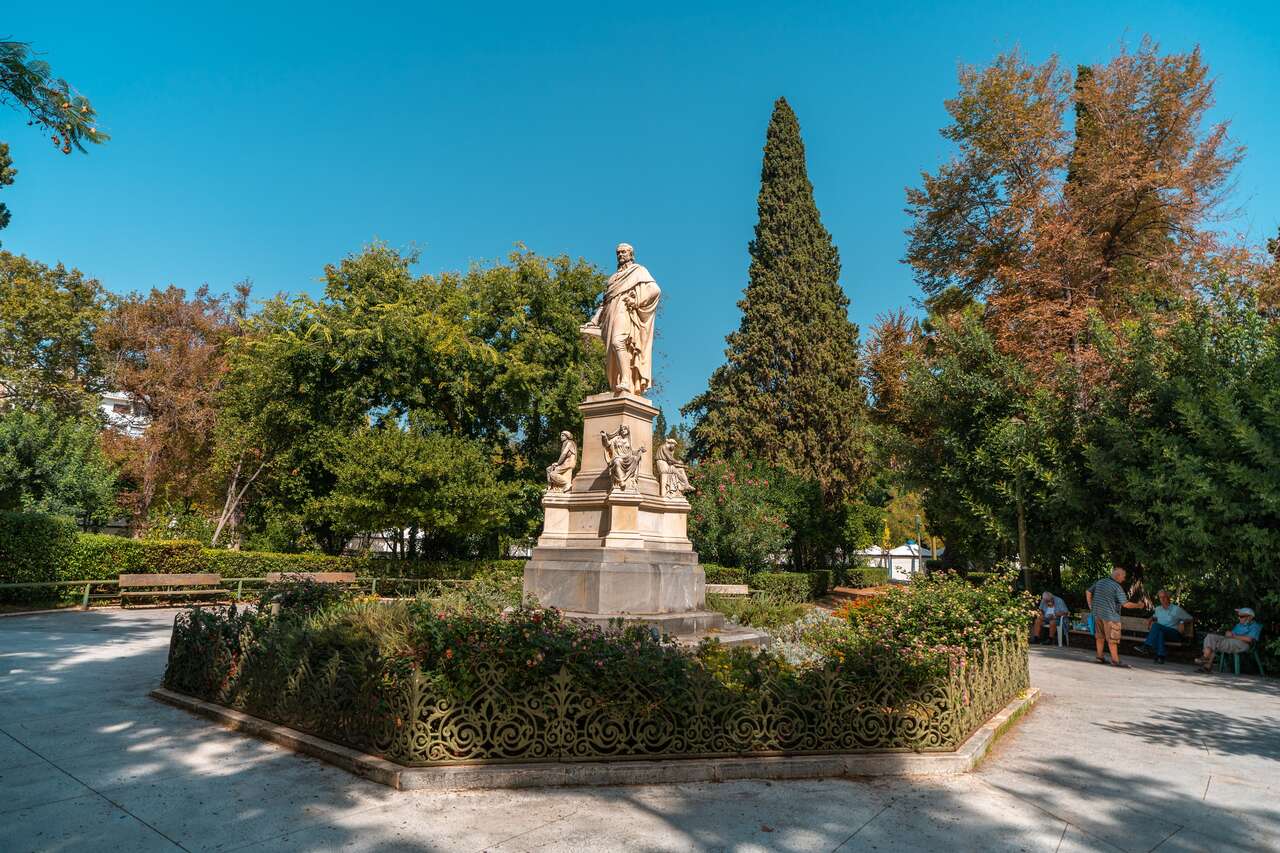
It is an excellent place to go on a peaceful stroll through the garden’s winding paths, relax on one of the many benches, or visit the small zoo, which houses a variety of animals, including peacocks and goats. The garden is open from 6 AM to 7 PM every day and it is free to enter.
12. Check Out Panathenaic Stadium
While you explore this part of Athens, be sure to check out the Panathenaic Stadium, an ancient stadium considered to be the birthplace of the modern Olympic Games we all know and love to this day. The Panathenaic Stadium was originally built in the 4th century BC as a venue for the Panathenaic Games, a major athletic competition held in ancient Athens. Unfortunately, the stadium fell into disuse in the early Christian period and was eventually abandoned thereafter.
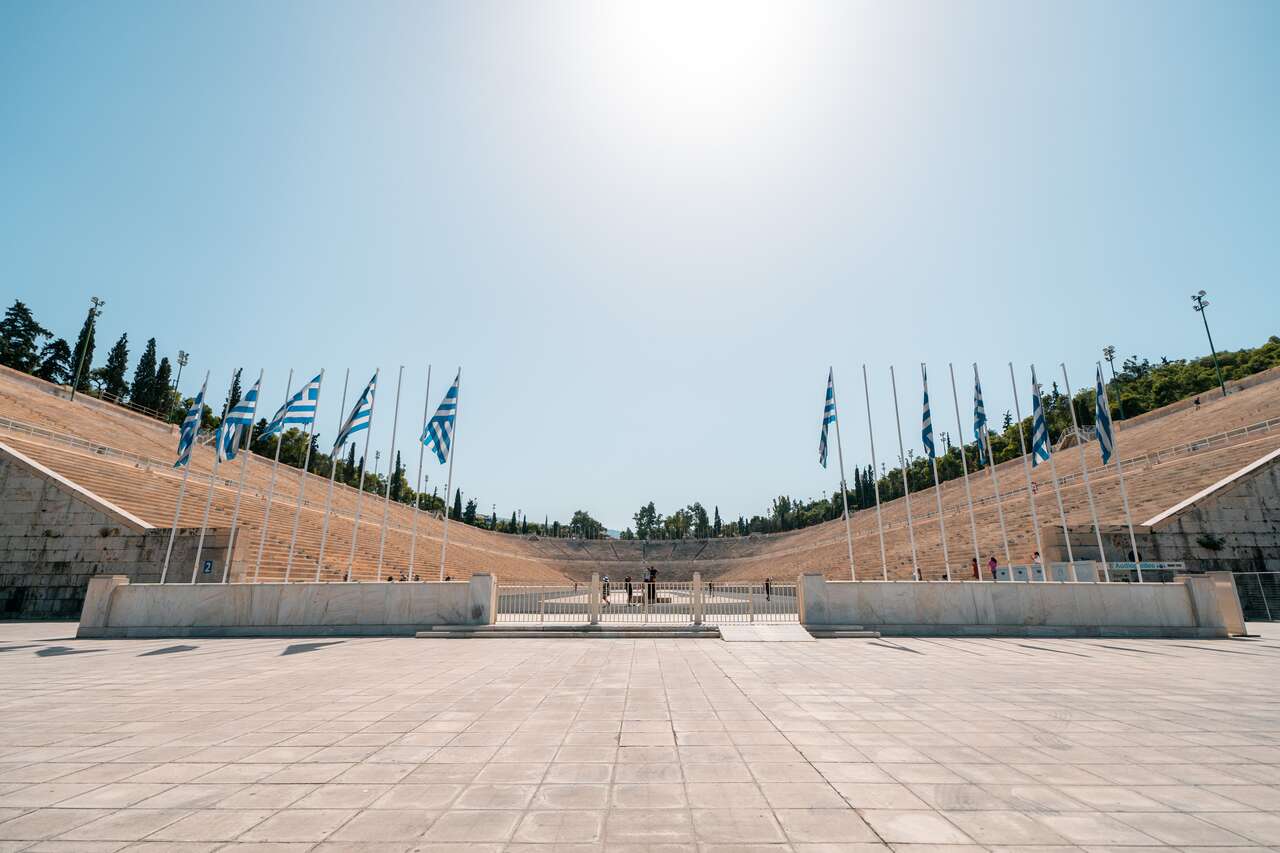
In the late 19th century, the Panathenaic Stadium was restored to its former glory in preparation for the first modern Olympic Games, which were held in Athens in 1896. The stadium features a large oval track and a central area that was used for various events in ancient times, including chariot races and athletic competitions.
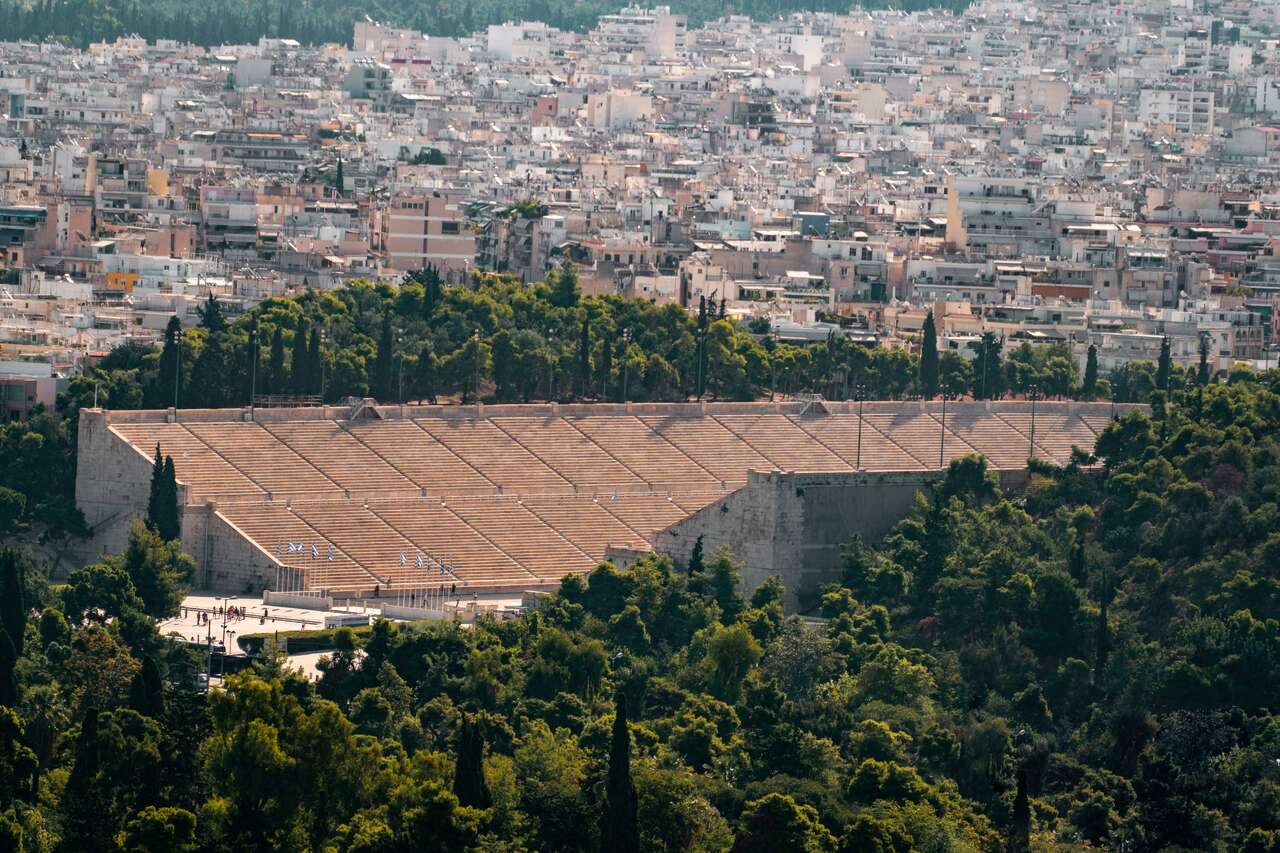
You can explore the stadium and learn about its fascinating history as well as observe all the cool features that were added to the stadium over the years to accommodate modern sports competitions. The ticket is 10 EUR per person and you can buy it at the entrance or you can go on a workout tour inside the stadium and imagine competing in an Olympic game with a local guide for an even more immersive experience.
13. A Day Trip To Delphi
One of the best day trips you can make from Athens is to go visit Delphi, an ancient Greek sanctuary located on the slopes of Mount Parnassus, only a few hours away from Athens. The place was one of the most important religious and cultural centers in ancient Greece and was believed to be the center of the world by the ancient Greeks.
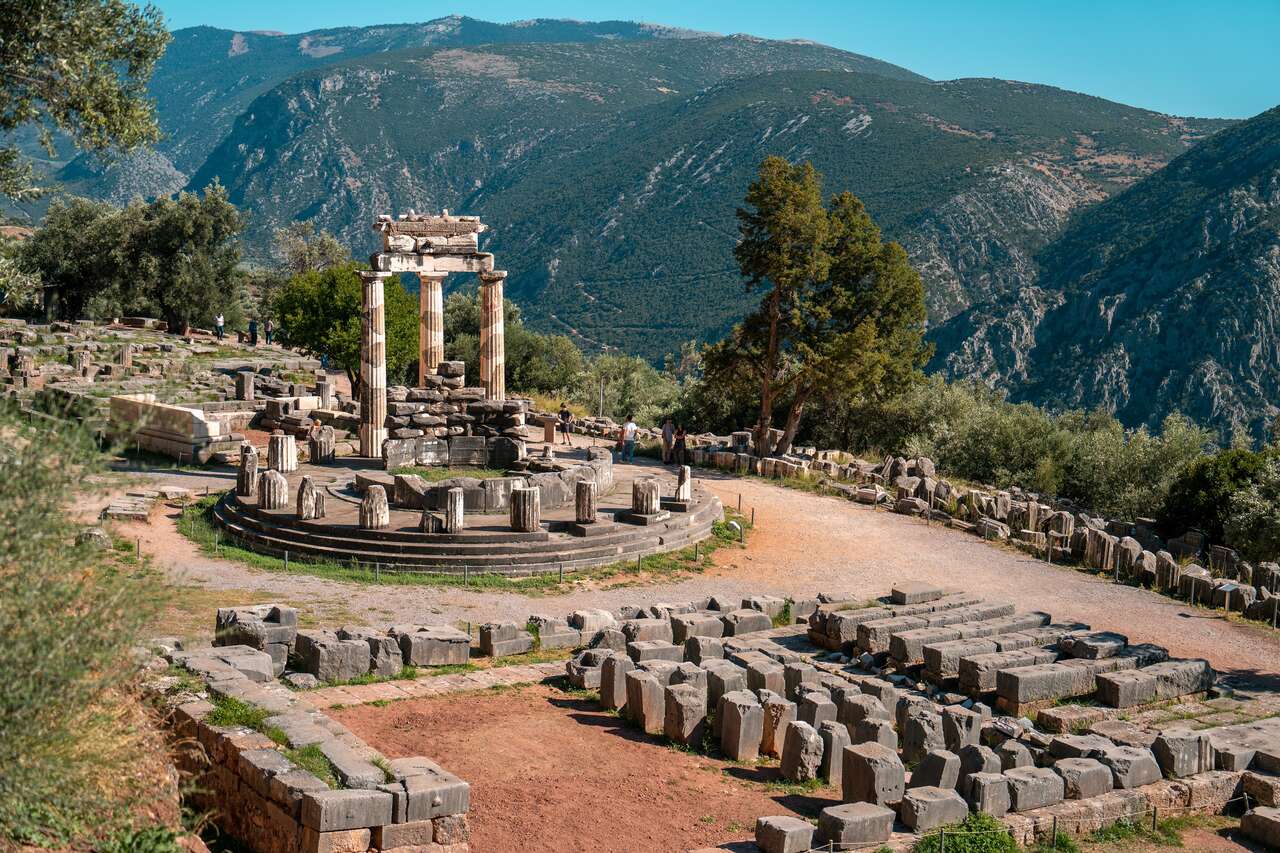
Delphi was dedicated to the god Apollo and was home to the famous oracle of Delphi, where visitors from all over the ancient world would come to seek advice and guidance from the god. The oracle was known for its cryptic and ambiguous responses, which were interpreted by the priests of the temple.
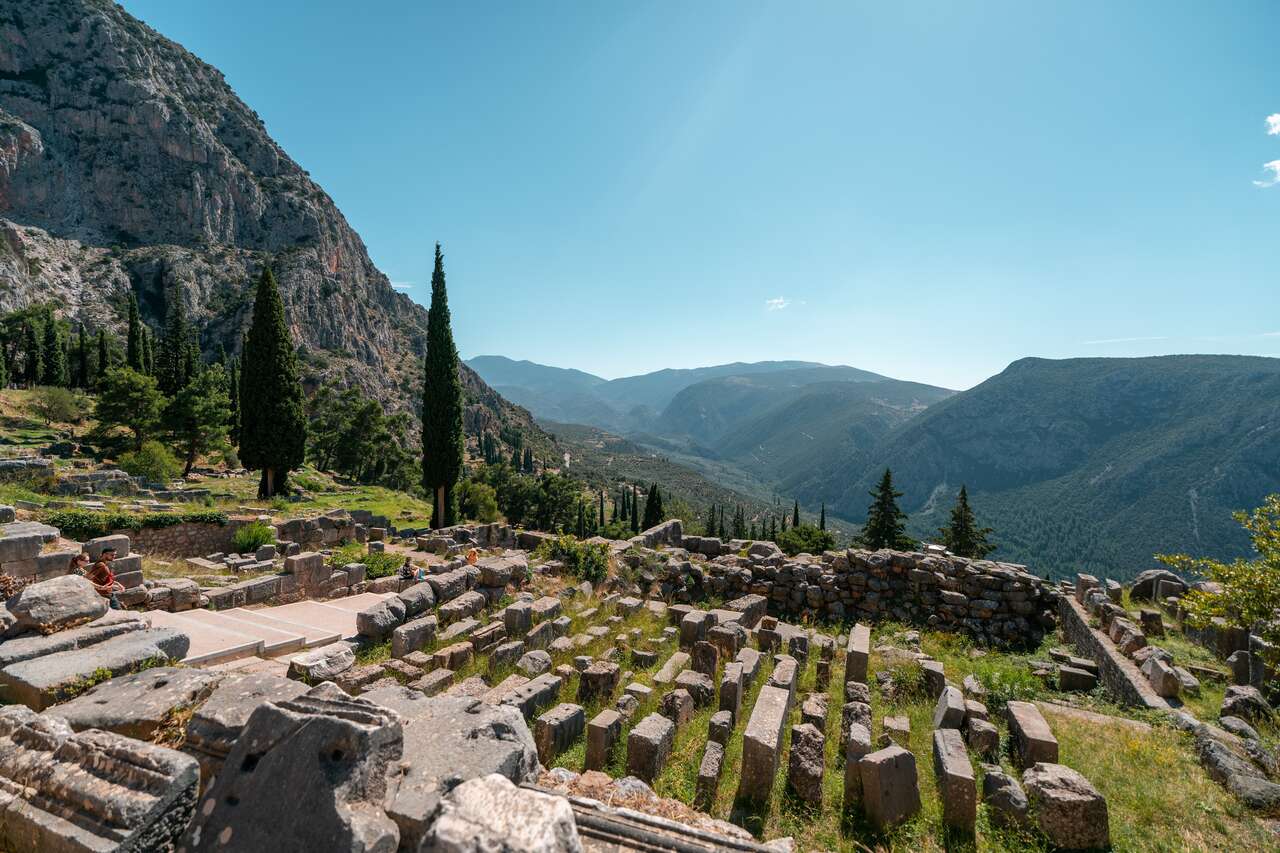
This story and the legends surrounding this ancient town should be enough of a reason for you to want to visit Delphi and see all the important landmarks that are considered to be some of the most well-preserved landmarks in the country.
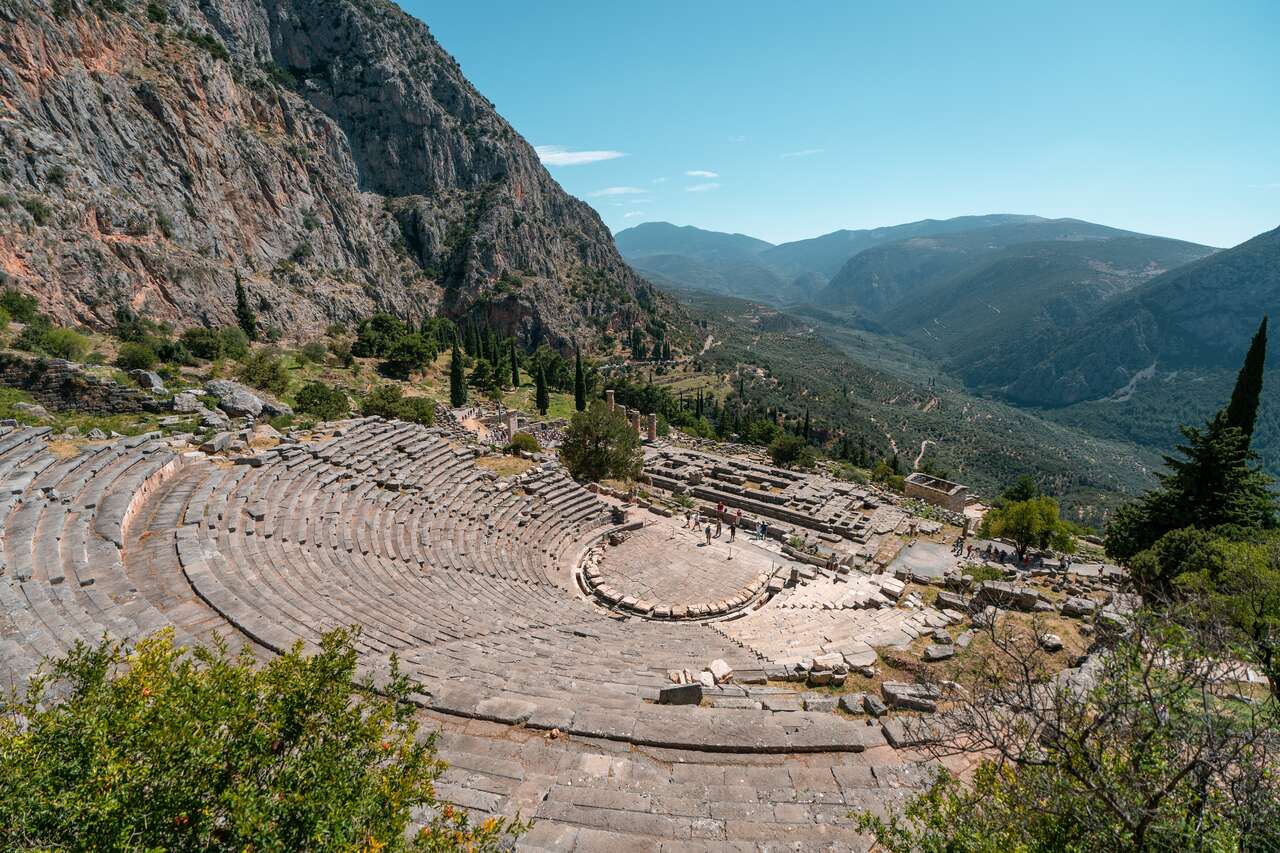
One of the most impressive features of Delphi is the amphitheater, which is carved into the side of a hill and offers stunning views of the surrounding mountains and valleys. The scale of the amphitheater is best appreciated from above so be sure to hike a little further up the trail to see it from up there.
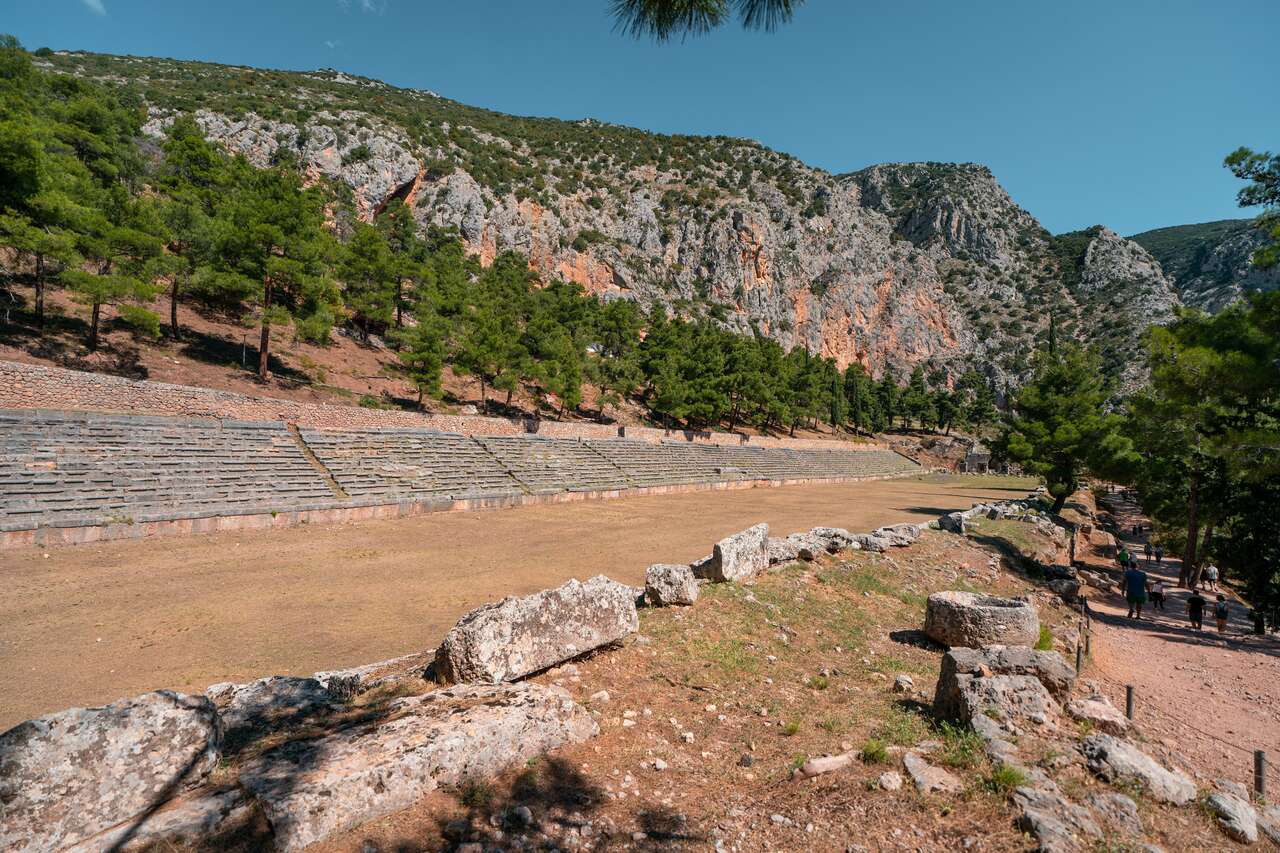
If you hike further up the mountain enough, you will find the ruins of the ancient stadium and the gymnasium, which were used for athletic competitions during the ancient Olympic Games. You can just imagine all the fanfare the place must have gotten from the audience during Delphi’s sports competitions.

Since there is no train access to Delphi, the best way to visit Delphi from Athens is via an organized tour that will take you there and back without having to worry about the logistics.
The tour usually lasts around 10 hours and they will also take you to places like Arachova, a charming village nestled in the foothills of Mt. Parnassus, Delphi’s Archaeological Museum, and stop at all the awesome viewpoints along the way.
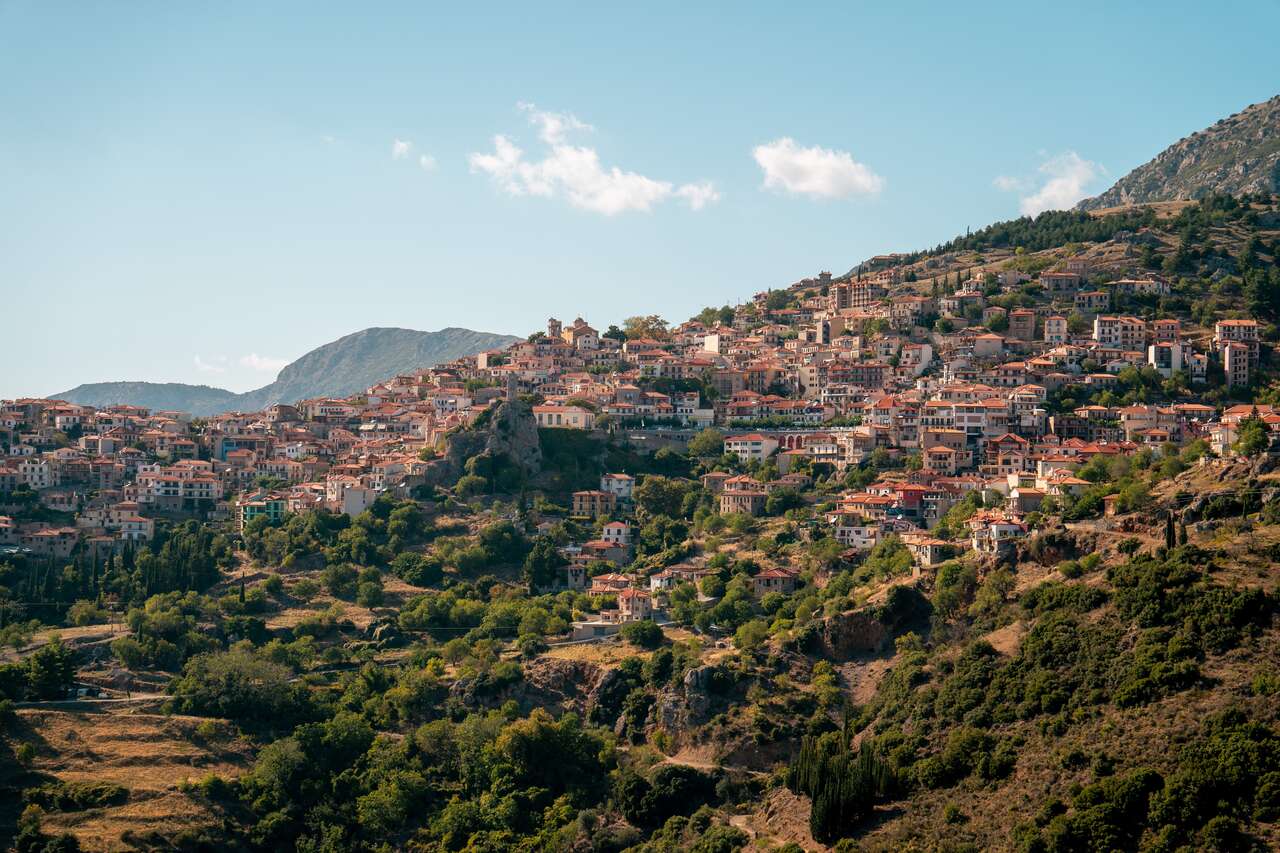 [……]
[……]
